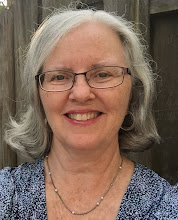 Left: Almost one-fifth of Florida's registered voters claim no party affiliation. In Massachusetts, slightly more than half claim no party affiliation. Graph source: Florida Division of Elections
Left: Almost one-fifth of Florida's registered voters claim no party affiliation. In Massachusetts, slightly more than half claim no party affiliation. Graph source: Florida Division of Elections Today's so-called major political parties, the Democratic Party and the Republican National Committee, might want to take a lesson from King George III, who discounted the American colonies with famous results. A few 18th century discontented colonists in Massachusetts changed world history. More than a few 21st century discontented voters in Massachusetts, and in other states, may be signaling the coming of an equally revolutionary change.
When Massachusetts Republican Scott Brown won last month's special election to fill what had been, for almost half a century, Democrat Ted Kennedy's Senate seat, many people viewed it as revolutionary a development as that which began 200-some years ago at Lexington and Concord. A Time magazine article, for instance, quoted some as calling it "the Scott heard round [sic] the world."
Not only did a Republican take a Democrat's seat, Brown's election tipped the power scales in the U.S. Senate. Yes, the Democrats still have a majority of seats -- 59 to 41. In a simple majority vote, assuming all senators of each party vote the same way and in opposition to the other party, the Republicans still don't have enough votes to defeat the Democrats.
But not all votes are simple majority votes. For instance, two-thirds, or 60, of the Senators must agree to stop a filibuster, a tactic that delays decisions from being made. That may not be so easy now that only 59 U. S. Senators are Democrats.
A January 16, 2010, Christian Science Monitor article hinted at an even bigger tipping of power: Among registered voters in Massachusetts, the article says, 51% are "unenrolled." That means more than half the registered voters in one of the founding states in the union -- technically, it's the Commonwealth of Masschusetts -- are not registered with any political party.
Historically, large numbers of registered voters have not claimed either of the major parties.
According to Massachusetts Registered Voter Enrollment: 1948-2004, a report found on the Massachusetts' Secretary of the Commonwealth's Web site, there were 2.485 million registered voters in the Massachusetts in 1948. Democrats accounted for 25.46% of the registered voters, 25.30% of voters registered as Republicans, and 49.25% -- almost half -- were unenrolled.
In 1958, during the time when John F. Kennedy represented Massachusetts in the U.S. Sentate (1953-1960), 31.03% of the state's 2.556 million voters were registered as Democrats, 26.16% were registered as Republicans, and 42.01% -- still more than in either of the so-called major parties -- were registered as unenrolled.
In 1968, six years after Ted Kennedy was elected to his first term as a U.S. Senator from Massachusetts, Democrats claimed 43.13% of the state's registered voters. Republicans claimed 21.52% of the voters, but 35.34% of the voters still were unenrolled.
The percentage of unenrolled voters has steadily increased. In February 2000, 50.32% of registered voters in Massachusetts were unenrolled, and in January 2008 50.34% -- slightly more than in the two major parties combined -- were unenrolled. One Massachusetts county, Franklin, had 57.99% unenrolled voters in January 2008.
"Unenrolled" should not be confused with any of the officially registered "third" parties -- also a misnomer. In Florida, for instance, there are 33 officially registered political parties other than the two "major" parties (as of December, 2009). Thirteen of those parties had enough wherewithal to have a candidate on Florida's 2008 presidential election ballot.
Nor should the term "independent" be used, as several minor parties use the word "independent" in their name. America's Independent Party of Florida (AIP), the Independence Party of Florida (IDP), Independent Democrats of Florida (IDF), and the Independent Party of Florida (INT) have all officially registered in Florida. The National Independent American Party currently is "seeking to organize in Florida," according to its Web site.
The number of unaffiliated voters in Florida has also risen. A pie chart on the Florida Division of Elections' Web site, shows 19% of registered voters unaffiliated, 3% registered with minor parties, 36% registered as Republicans, and 42% registered as Democrats, as of November 2009.
In 1972, only 3.37% of Florida's registered voters did not affiliate with either the Republicans or Democrats.
In Pinellas County, whose Supervisor of Elections office updates the registration information daily on their Web site's home page, the December 2009 voter registration report showed 38.82% of the county's 599,720 voters registered as Democrats, 36.65% registered as Republicans, 19.24% with no party affiliation, and 5.27% registered with other parties.
According to the Pinellas County Supervisor of Elections' office, the minor parties with the largest number of registered voters were the Independent Party of Florida (INT) with just over 20,200 registrants, the Independence Party of Florida (IDP) with just over 3,000 registrants and the Libertarian Party of Florida (LIB) with just over 1,300 registrants.
Almost 5,000 registered voters in Pinellas County are designated as Unknown (UNK), usually because they didn't indicate an affiliation with any of the registered parties nor did they mark the "no party affiliation" option.
Still, while Scott Brown's election may have been "the Scott heard round the world," a new American revolution may have been quietly brewing for decades.

No comments:
Post a Comment
Feel free to comment, but not to rant, slander, libel, or otherwise defame. No profanity. Back up your comments with facts and sources. The object here is to inform.